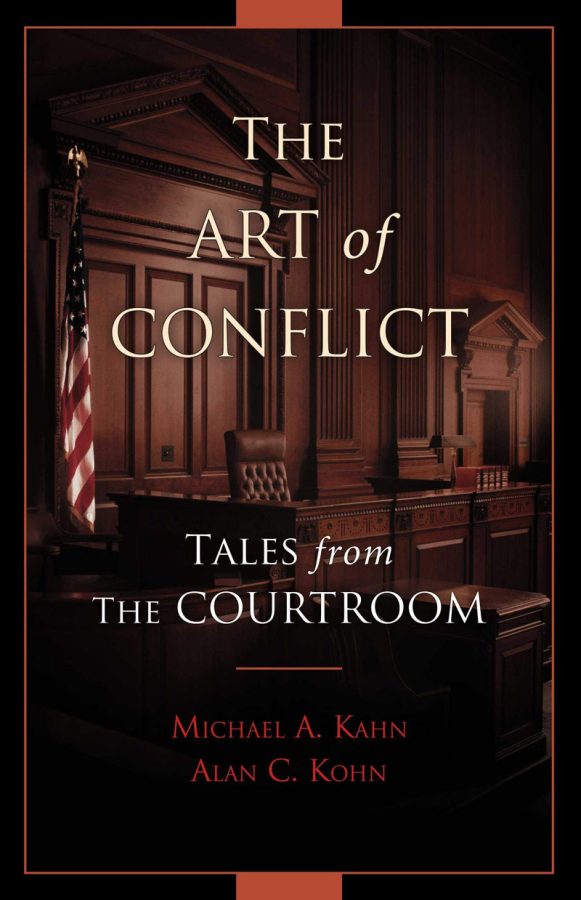A blend of legal fact and fiction in ‘The Art of Conflict’
Published June 6, 2019
Over the years, I have reviewed and enjoyed the entire series of Rachel Gold novels by St. Louis attorney and author Michael Kahn, which chronicle the adventures of the formidable but endearing female lawyer and her brilliant, foul-mouthed sidekick Benny Goldberg. Their St. Louis-based cases have brought them from the sewers and caves underneath our streets to favorite eateries and watering holes throughout our community.
The structure of “The Art of the Conflict,” by Kahn and Alan C. Kohn, a noted trial attorney living in St. Louis, makes it move along at a fast clip. The book intersperses chapters about fictitious Rachel Gold’s various cases — many of which lead to heart-pounding suspense in her relentless pursuit of justice — with real-life case studies and anecdotes by Kohn, a former clerk to U.S. Associate Supreme Court Justice Charles E. Whittaker, and a Fellow of the American Trial Lawyers Association.
Some of the topics tackled include courtroom clerks, cross-examination and “judicial activism.” As for the latter, Kohn explains the phrase is usually used by conservatives to describe judges, especially the justices of the Supreme Court, who fail to interpret the law as they find it in statues, case law and the Constitution. “Instead, they act as legislators, not judges, because they apply their personal biases ad prejudices,” Kohn writes.
He goes on to provide an analysis of federal acts declared unconstitutional by the U.S. Supreme Court to determine whether or not these decision were the result of judicial activism.
In the chapter that precedes this one, entitled “Judicial Activism: Mythical or Maniacal or Both?” Kahn weighs in with the fictitious Judge Howard Flinch, described as “the worst judge in the history of Missouri.” So many lawyers opt to change out from Flinch’s inept mishandling of his bench duties, that often his chambers are empty. “Entire days can pass without anyone entering or leaving the chambers of Judge Flinch,” writes Kahn.
Kahn discreetly does not identify a real-life Flinch, but the lawyers among readers are likely to know a few examples from their own courtroom experiences. However, Kahn does include a description of Flinch dressing down a highly competent attorney — and rival to Gold — as an example of Flinch’s demeanor of harshly disrespecting attorneys in his courtroom and not really staying on task.
While Kohn does not cite a parallel to Flinch at the federal level, he describes how “terrified” he was at the prospect of interacting with members of the nation’s highest court. He offers an essay on serving as a clerk to Justice Whittaker from 1957-58 — during a time of great turbulence in then nation and such landmark civil rights cases as Brown v. the Board of Education, worried that he had lost his law school grasp of Constitutional law.
The bright young lawyer quickly adapted to his new role and helped prepare opinions on several major cases involving civil liberties, including Yates v. the United States, which reversed the conviction of the defendant for having taken the position of the Communist Party calling for the violent overthrow of the U.S. government.
Both Kahn and Kohn infuse their writings on what could be dry legal subjects with good-natured sarcasm. And as always in his Rachel Gold novels, Kahn makes numerous Jewish and St. Louis references throughout his narratives.
“The Art of Conflict” provides illuminating insights into our legal system, made even all the more readable by weaving fictitious vignettes that underscore fascinating real-life litigation tactics.
















